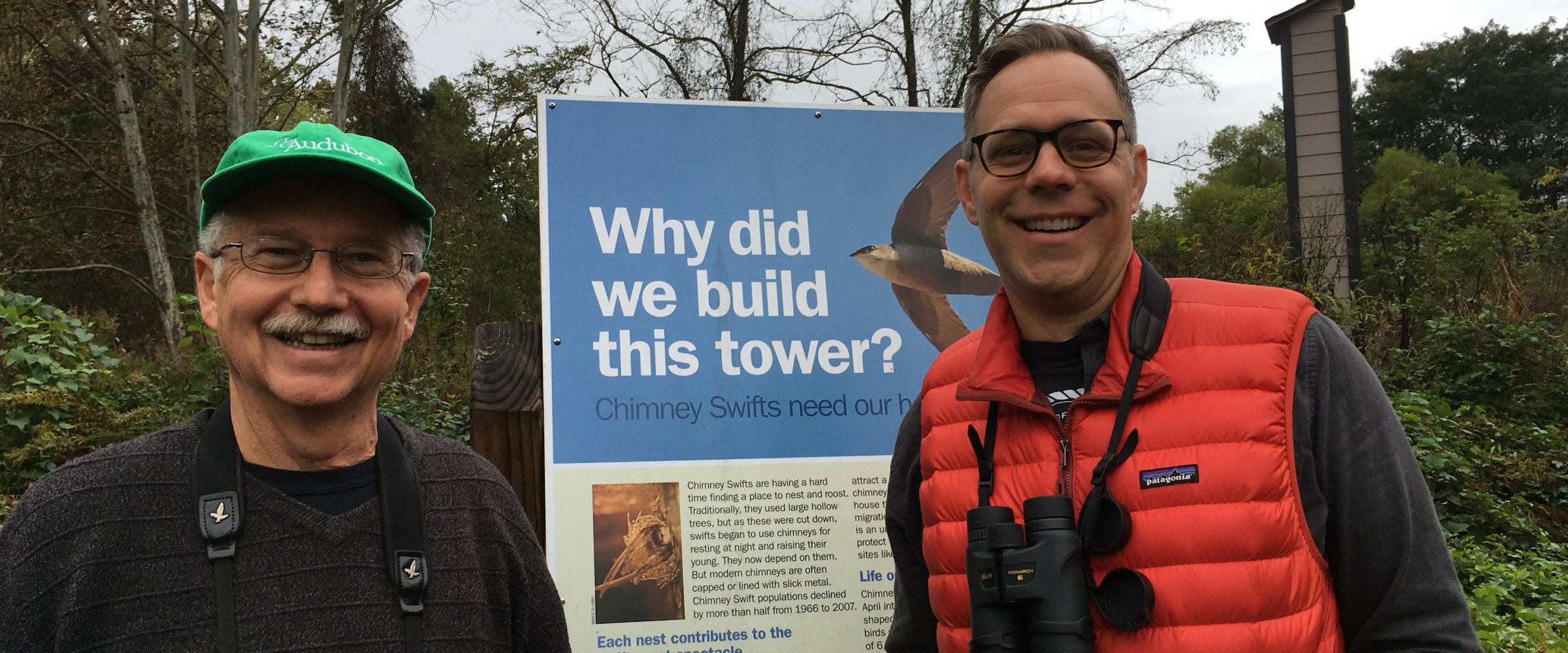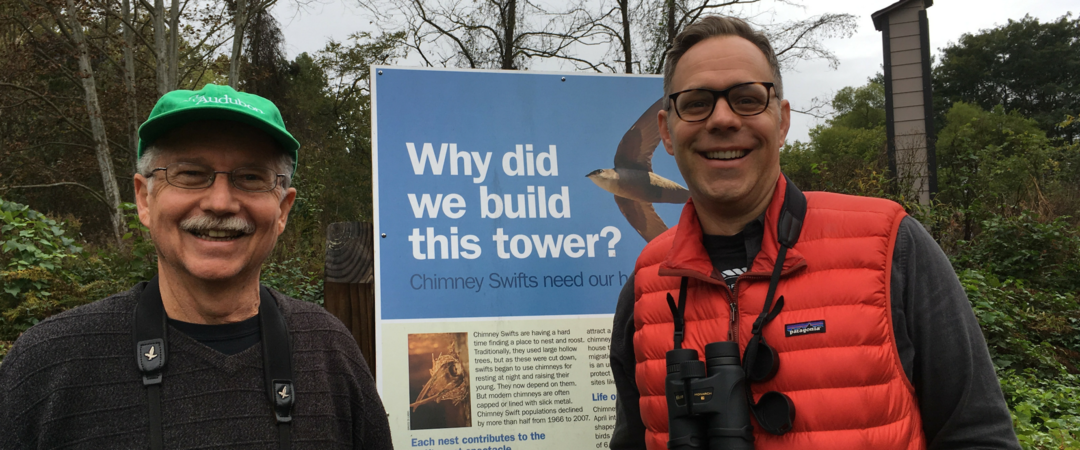Back in 2013, 25 people gathered in a room to create a program that has made our state a better place for birds, and people too. The Bird-Friendly Communities program was intended to develop projects in the places that people live to ensure that birds are always among us. This program has catalyzed and inspired thousands of volunteers across the state to take concrete actions to protect birds and the places they call home.
In the past five years, the passionate staff members and volunteers have moved the needle for individual species of birds as well as created new niches of action for bird conservation.
Bird of the Year
Through focused actions and coordinated awareness building, these three species benefited from multi-year efforts with tangible steps that people can take to help birds.
Brown-headed Nuthatches
- 12,000 Brown-headed Nuthatch nest boxes installed
Wood Thrushes
- 6,000+ people learned how one special Wood Thrush connected North Carolina and Belize by watching the Wood Thrush Connection, which won awards at the Belize International Film Festival and the Boone Film Festival
- With our story of the Wood Thrush and its favorite fall-migration fuel, Spicebush berries, we created a temporary statewide shortage of Spicebush
Chimney Swifts
- Audubon chapters and their community partners built a dozen nesting towers plus a brick roosting tower -- an effort led by Wake Audubon at Prairie Ridge Ecostation – and most chapters host Swift Night Out programs highlighting the spectacle of their fall migration. We also helped host a very successful Chimney Swift Conservation Summit with Wake Audubon Society in 2015, bringing together more than 100 participants including some of the top swift researchers in the country.
Community Science
Keeping the ledger for birds is a way that people can keep tabs on bird populations across the state. Through planned count days, volunteers report on bird species in our country and beyond.
Climate Watch
- 6 Audubon chapters – Elisha Mitchell Audubon Society, Mecklenburg Audubon Society, Forsyth Audubon, New Hope Audubon Society, Wake Audubon Society, and Cape Fear Audubon Society – and one bird club – High Peaks Birders in Yancey County – led Climate Watch counts.
- 162 Climate Watch volunteers surveyed nuthatches and bluebirds to test the predictions of the Audubon Birds and Climate Change Report. Across the Audubon network, 1 in 7 Climate Watch participants is a North Carolinian!
Plants for Birds
Launched in 2015, this initiative works to produce more native plants and find more people who wanted to plant them. Your yard -- and the kinds of plants in it -- matters more than you may know. Native plants play a critical role in providing the food birds need to survive and thrive in a way that non-native plants cannot do. Here are some of the ways this program has made more room for bird-friendly native plants.
- 8,985 people found bird-friendly plants for their zip code via our national native plants database
- 87 nurseries partnered with Audubon chapters and the state office to sell more native plants
- Hundreds of bird-friendly gardens bloomed from the mountains to the coast, from small urban yards to formal gardens at the Executive Mansion in Raleigh and the governor’s Western Residence in Asheville, including several projects led by local chapters at schools, churches, libraries, and other locations.
- Increased the state office's and chapter capacities through funding from Audubon Toyota TogetherGreen, Wells Fargo, National Audubon Society Burke Grants, and other sources to further these BFC projects.
- City of Winston-Salem and Forsyth County passed a native plants ordinance
- Audubon Ambassadors worked with the Town of Matthews and City of Asheville to improve their plant lists
- Governor Roy Cooper proclaimed Native Plants Week
- 700 native plant species were recommended in our “big list” including all the info needed to plant each of them in the right place
- 5,625 people learned how to make their communities more bird-friendly during 375 in-person presentations by volunteers and staff
- New Hope Audubon Society volunteers visited 80 yards, making recommendations to improve a total of 366 acres
- Cape Fear Audubon Society worked with dozens of homeowners toward bird-friendly yard certification
- Forsyth Audubon advised the City of Winston-Salem on the Miller Park stream restoration
- T. Gilbert Pearson Audubon Society advised the City of Greensboro on plantings for the Greenway
- Highlands Plateau Audubon co-organized invasive-plants workshops
- Audubon chapters from mountains to coast planted bird gardens with community partners – Forsyth Audubon with Habitat for Humanity, Elisha Mitchell Audubon with St. Eugene Catholic Church, Wake Audubon at Prairie Ridge Ecostation with the NC Museum of Natural Sciences, High Country Audubon with Valle Crucis Community Park, Mecklenburg Audubon Society with the Charlotte Nature Museum – just to name a few!
Lights Out and Bird Collisions
Launched before the Bird Friendly Communities program was formed, this volunteer-based initiative works to dim bright city lights during migration. A bird can become confused and fly into a window almost anywhere and at any time. But the problem is especially important during migration seasons, when large numbers of birds are on the move at night, navigating by the stars, and in cities with thickets of well-lit buildings. Well-organized groups of volunteers patrol the streets below the glass towers collecting the bodies of collision victims. They work with local governments and property owners to make buildings less alluring to birds. Here are some ways volunteers helped put out the lights in North Carolina.
- Five buildings in downtown Winston-Salem turned their lights out earlier during spring and fall migration, thereby reducing bird collisions
- Volunteers in Charlotte, Raleigh, Greensboro, Cary, and Winston-Salem monitored bird collisions and advocated for lights out
- The city of Raleigh committed to Lights Out for municipal buildings
- New Hope Audubon Society worked with the North Carolina Botanical Garden to stop bird collisions with the installation of window film








